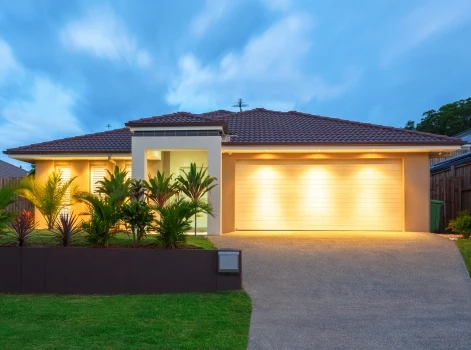Building a house is an important investment. It is important to have a clear understanding of the costs involved before you begin the process. In Australia, construction costs vary based on many factors, such as location, property size, materials and labour costs. A clear understanding of these factors is essential in calculating the total expenditure for your home project. With this knowledge, you can make informed decisions throughout the building process, ensuring your finances remain on track. In this article, we will delve into the specifics of the costs involved in building a house in Australia.
What Is The Average Cost Of Building A Home In Australia In 2024?
The cost of building a home is commonly expressed in terms of cost per metre. In Australia, the average cost of building a house ranges from $2,000 to $4,300 per square metre. For example, building a house in a regional area using standard materials and hiring a less-experienced builder can be relatively inexpensive. On the other hand, building a high-end house in a metropolitan area with premium materials and an experienced construction company can push costs near the top of the range.
The following table shows the average cost to build a house in 2024:
| State | Cost Per Square Metre | Average Cost Of A 214 Sq. Metre House |
|---|---|---|
| South Australia | (Adelaide) $1,740 to $3,800 | 375,000 to 815,000 |
| Queensland | (Brisbane) $2,500 to $4,500 (Gold Coast) $1,600 to $4,400 | 535,000 to 965,000 340,000 to 940,000 |
| Australian Capital Territory | (Canberra) $1,840 to $3,650 | 395,000 to 780,000 |
| Northern Territory | (Darwin) $1,900 to $2,950 | 405,000 to 630,000 |
| Victoria | (Melbourne) $2,000 to $4,300 | 430,000 to 920,000 |
| Western Australia | (Perth) $2,200 to $4,100 | 470,000 to 880,000 |
| New South Wales | (Sydney) $2,100 to $6,400 | 450,000 to 1,370,000 |
Source: Rider Levett Bucknall
Based on the average cost of building a 214 sq meter home in each Australian state, the national average cost in 2024 is about $432,000 to $926,000.
Factors Affecting The Cost Of Building A Home In Australia
Location
The location of the home is one of the biggest factors determining the cost of building a home. Construction in a more densely populated city with a higher cost of living will generally be more expensive than building a home in a rural area. This is because labour costs are higher in metropolitan areas, and land is generally more expensive.
Size Of The Property
Building a larger home with more complex design elements will generally be more expensive than building a smaller, more basic home. Larger properties require more materials, labour, and time to construct, which drives the cost.
Materials
Using high-end materials such as marble or hardwood flooring will be more expensive than laminate or tile. Using high-end appliances and designer fixtures will be more expensive as well. Some materials are also more expensive in certain regions of the country, so it is essential to research the cost of materials in your area. Concrete (per cubic meter) costs more in New South Wales than in other states.
Labour Costs
This includes the cost of hiring contractors, electricians, plumbers and other professionals required to build a home. The cost of labour varies depending on the experience and skill level of the workers. The cost of hiring a builder or a contractor can also vary depending on the size and complexity of the project.
Permits And Regulations
Local government agencies may require certain approvals or certifications before construction can begin.
Tips To Save On Building Costs
- Choose a smaller home design with fewer rooms.
- Use less-expensive building materials, such as laminate or tile, instead of marble or hardwood flooring.
- Research and compare prices for contractors and other professionals – and negotiate for better rates.
- Become familiar with the local building regulations and obtain all necessary permits promptly.
- Ask the builder or contractor to provide a detailed cost estimate that covers materials, labour and other expenses; this can you help create a realistic budget and avoid surprises.
- Lenders Mortgage Insurance (LMI) is an important consideration when building a home, especially if you have a smaller deposit.
The 360° Home Loan Assessor provides insights into LMI costs and how they can affect your overall expenses.
Consult Our Experts
Before building a home, take the time to research and compare prices for materials, labour and permits. You should also consider the different ways to save on building costs and make a budget based on the estimated costs. Talk to our mortgage brokers if you want expert guidance as you apply for a construction home loan.
Call us on 1300 889 743 or enquire online today!
[sg_popup id=81314]
